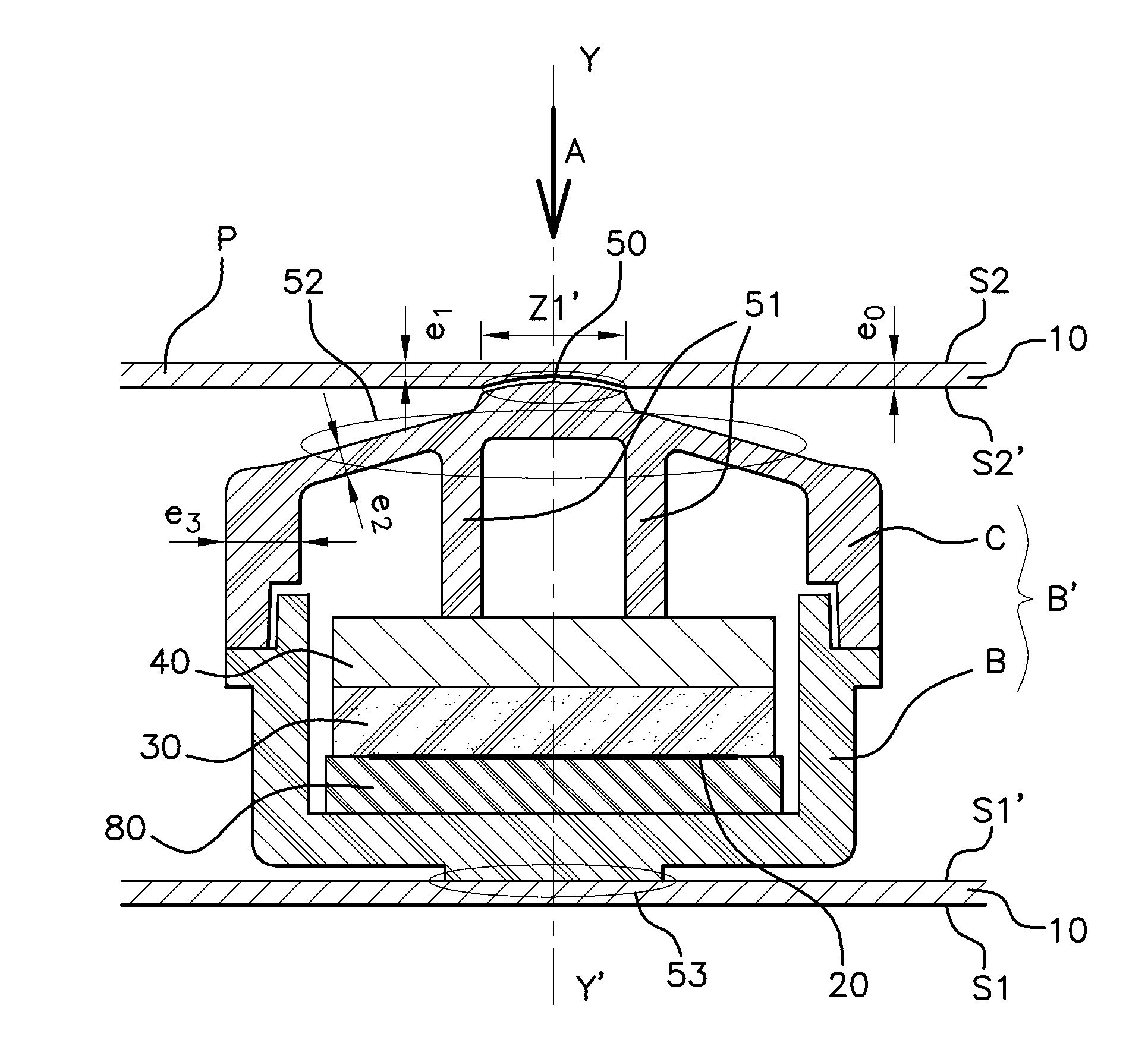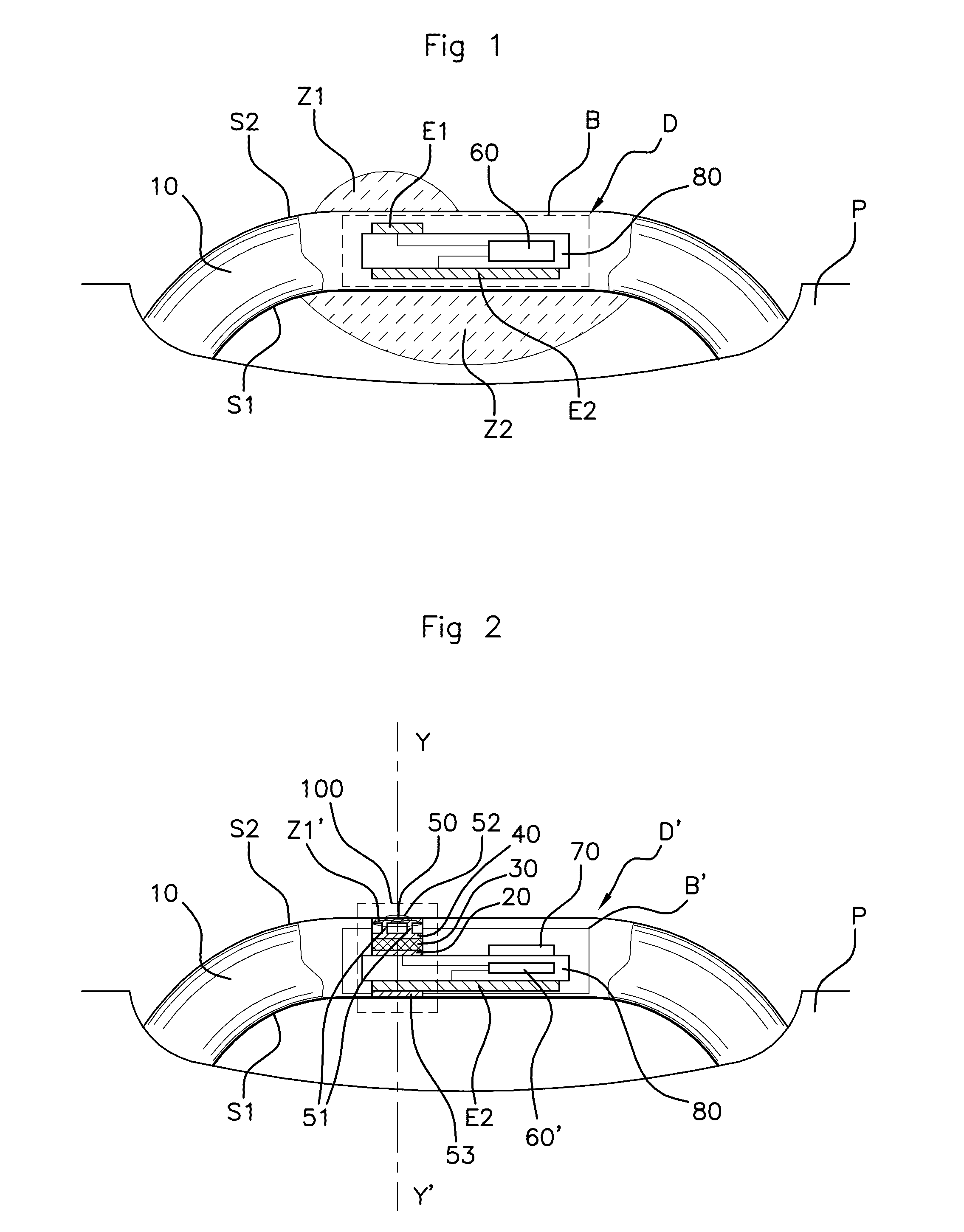Device for detecting a user's intention to lock or unlock a motor vehicle door
a technology for detecting a user's intention and a vehicle door, which is applied in the direction of pulse technique, anti-theft device, instruments, etc., can solve the problems of detection of a user's approach through capacitive sensors, prior art detection devices d has serious drawbacks, etc., and achieves discreet aesthetic appearance and ease of use, no false positives, and reliable and robust
- Summary
- Abstract
- Description
- Claims
- Application Information
AI Technical Summary
Benefits of technology
Problems solved by technology
Method used
Image
Examples
Embodiment Construction
[0048]The detection device D′ according to the invention is illustrated in FIG. 2.
[0049]Said detection device D′ takes the form of a casing integrated into the handle 10, and comprises, as in the prior art, a printed circuit 80 and at least one element for detecting the contact of the user's hand on the handle, and a voltage source.
[0050]However, by contrast with the prior art, in which the contact detection element was formed by a capacitive sensor (locking electrodes E1 or unlocking electrodes E2), the invention proposes that said contact detection element 100 comprise an inductive sensor, consisting of a non-magnetic metal target 40 and a coil 20 among other components.
[0051]More particularly, the casing B′ comprises a first part 52′, elastically deformable along a predetermined axis Y-Y′, comprising an area 50 of contact with the handle 10, and the detection element 100 comprises:[0052]a non-magnetic metal target 40 adapted to move along the predetermined axis Y-Y′;[0053]a coil ...
PUM
 Login to View More
Login to View More Abstract
Description
Claims
Application Information
 Login to View More
Login to View More - R&D
- Intellectual Property
- Life Sciences
- Materials
- Tech Scout
- Unparalleled Data Quality
- Higher Quality Content
- 60% Fewer Hallucinations
Browse by: Latest US Patents, China's latest patents, Technical Efficacy Thesaurus, Application Domain, Technology Topic, Popular Technical Reports.
© 2025 PatSnap. All rights reserved.Legal|Privacy policy|Modern Slavery Act Transparency Statement|Sitemap|About US| Contact US: help@patsnap.com



